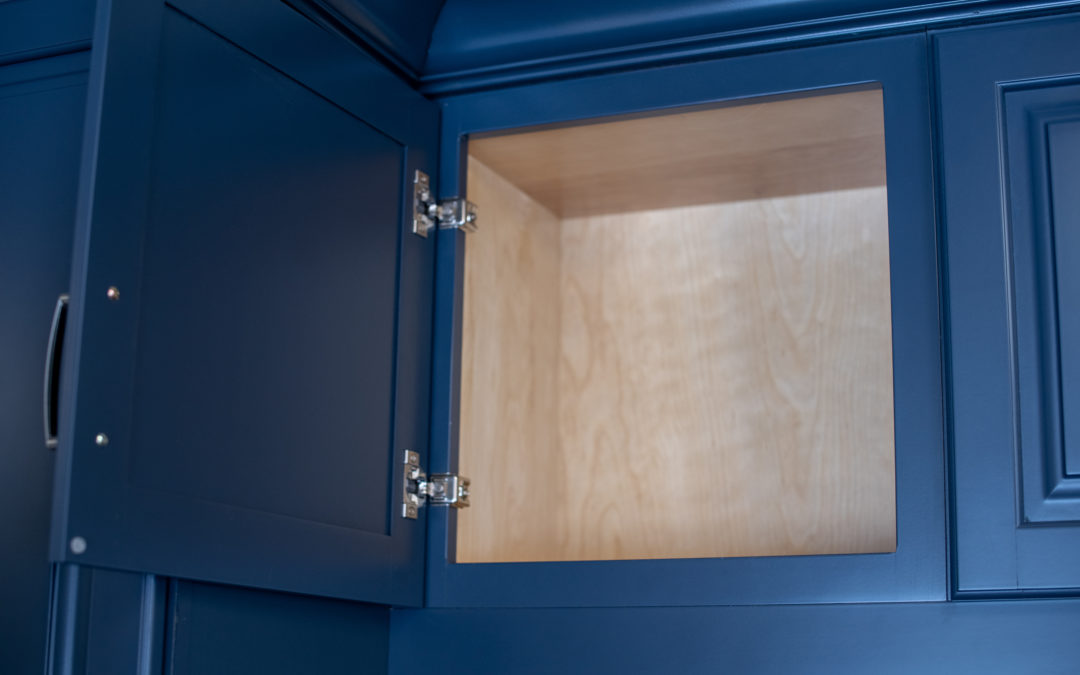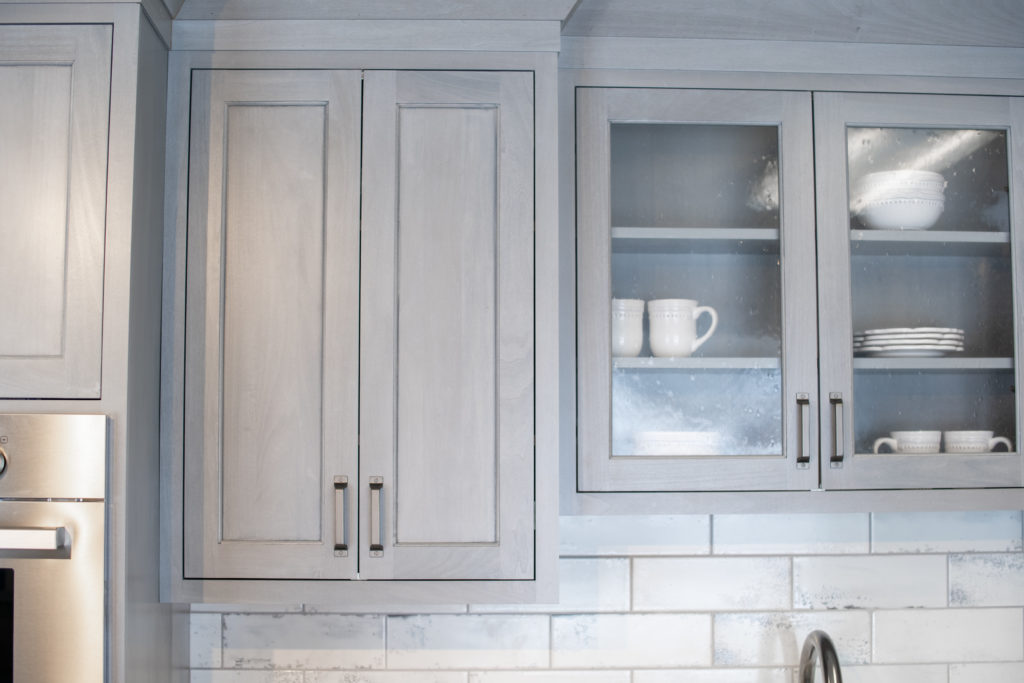- Framed – Standard Overlay
- Framed – Inset Doors
- Frameless Cabinets
- Framed – Full Overlay
At LJ’s Kitchens & Interiors, we LOVE talking about cabinets! They’re just so customizable and there are nearly endless options to create the exact look you want! There are two major types of cabinets to consider: framed or frameless. Both of them have their advantages, so let’s explore the differences so you can decide which type of cabinet construction is best for you.
Framed Cabinets
Framed cabinets are as the name suggests: a cabinet that includes a square frame covering the entire front face of the cabinet box. The doors are then attached to this frame. This is how cabinets have been built in America for decades, and remain a very popular option.
The Advantages of Framed Cabinets
Adding a front frame to the cabinet box reinforces it, allowing the cabinet to better stand up to daily use. Another advantage is the frame allows for further design possibilities for how the cabinet door overlays in front.
The standard is the simple overlay, where the door is attached to the front of the frame, popping out from the frame to add another layer of dimension. This is the traditional look that you likely associate with kitchen cabinets where both the frame and door are visible and separate.
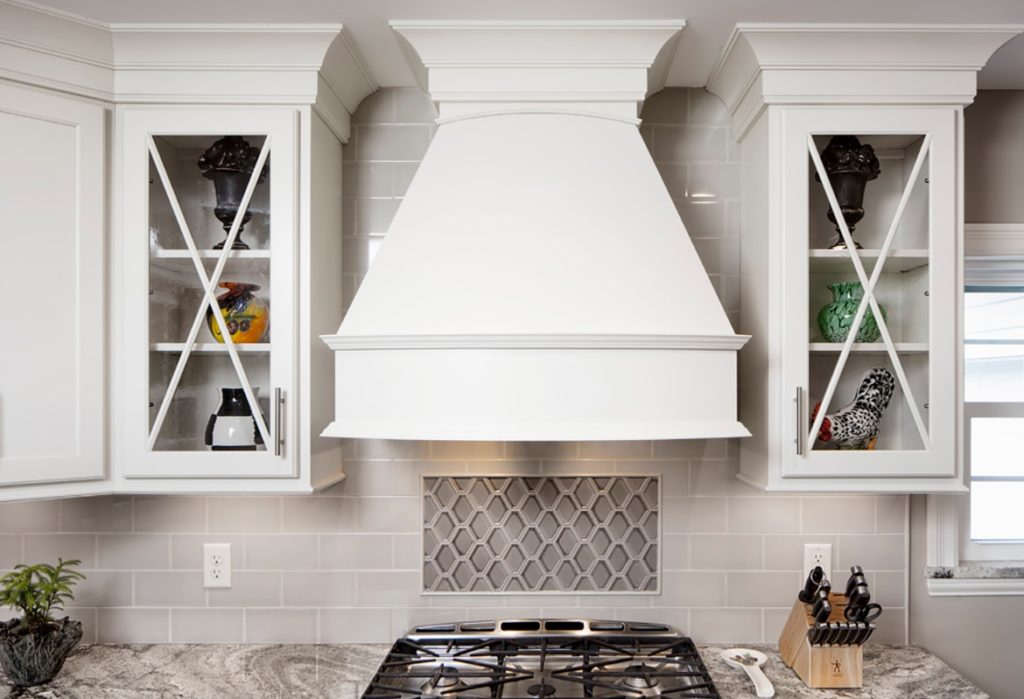
Standard Overlay Cabinets
The second style is a full overlay, where the cabinet door is the same size as the cabinet box and little frame is exposed.
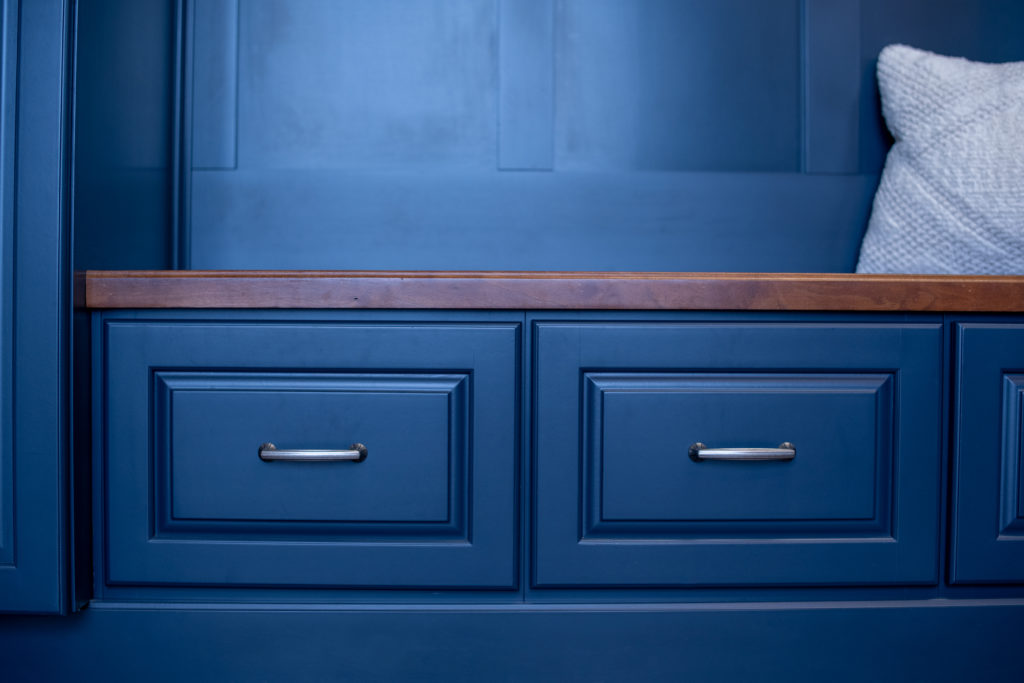
Full Overlay Cabinets
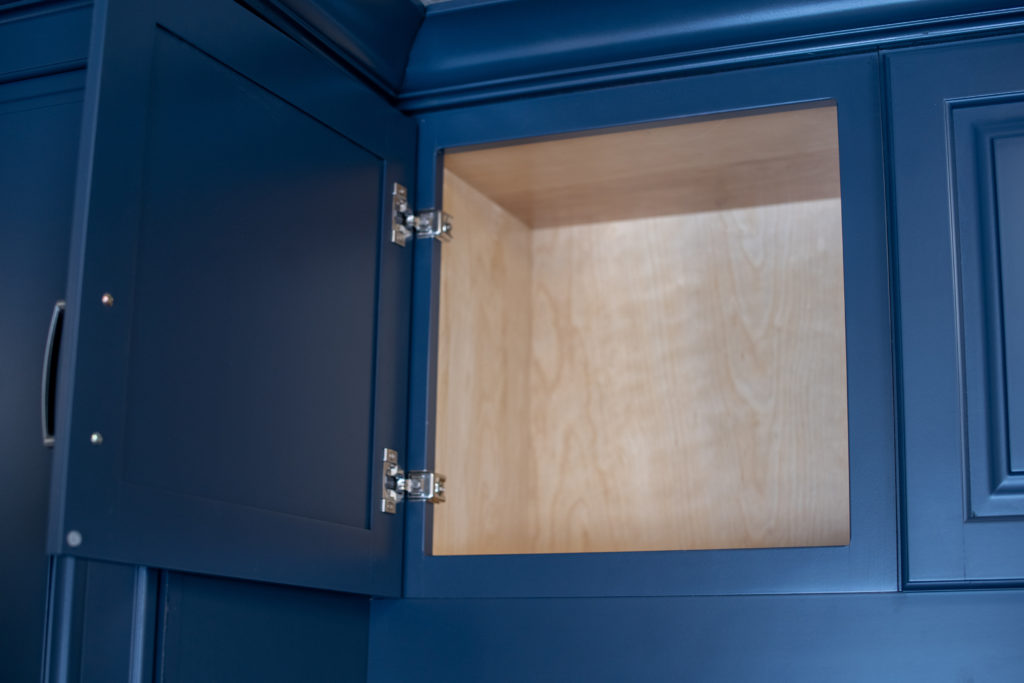
Full Overlay Cabinets Inside View
Finally, there are inset doors that don’t hide the frame at all but instead settle the doors flush within the frame to create a completely uniform front. Both inset and full overlay provide a cleaner, minimalist look.
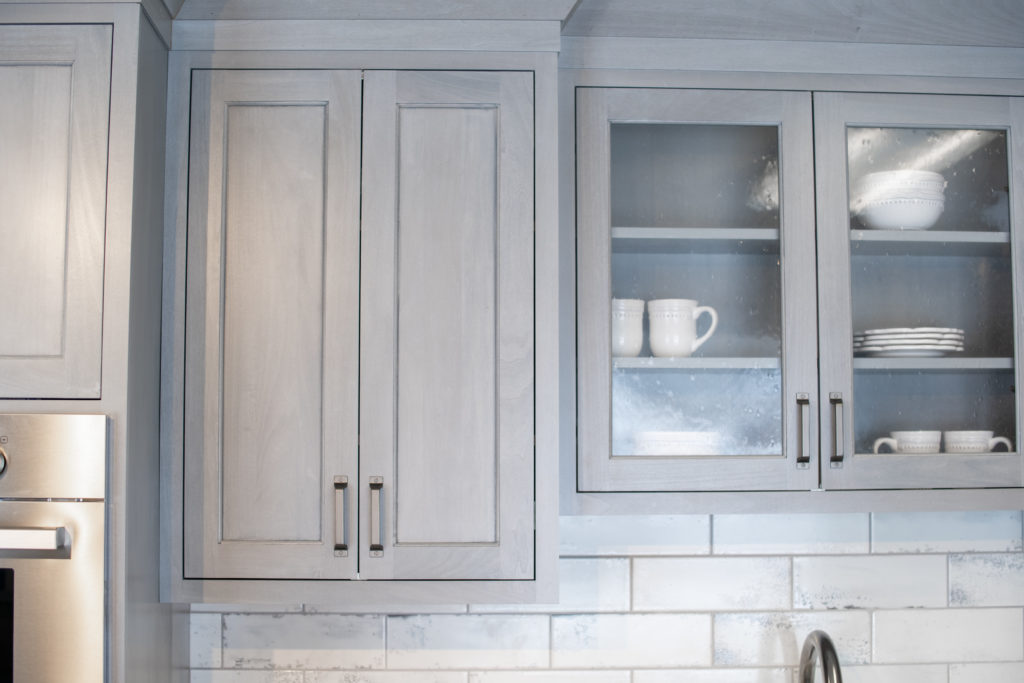
Inset-Door Cabinets
Frameless Cabinets
If you didn’t add a front frame, you’d be left with a frameless cabinet where the door is attached to the sides of the cabinet box. This is a more modern style that originated in Europe but has spread its influence to American homes. Because of the lack of frame, these cabinets can only offer full overlay style doors. Even with this limitation, frameless cabinets look seamless and are considered very contemporary.
The Advantages of Frameless Cabinets
These cabinets do offer slightly more storage volume since they don’t have a frame taking up space. The frameless cabinet interior is also more accessible and provides a slightly larger opening for fitting large plates or cookware.
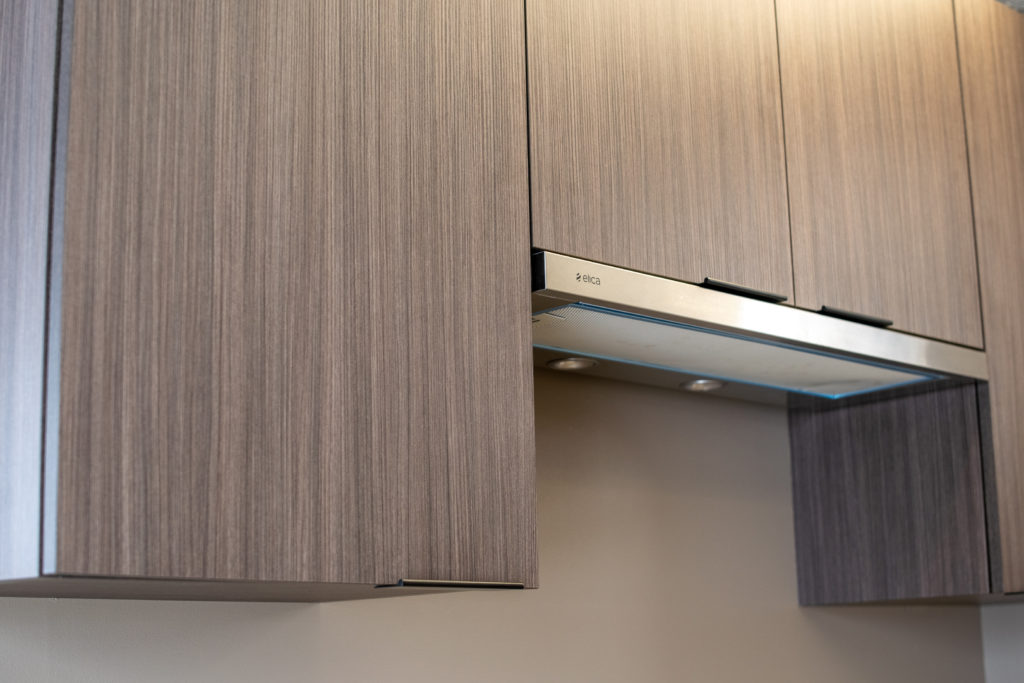
Frameless Cabinets
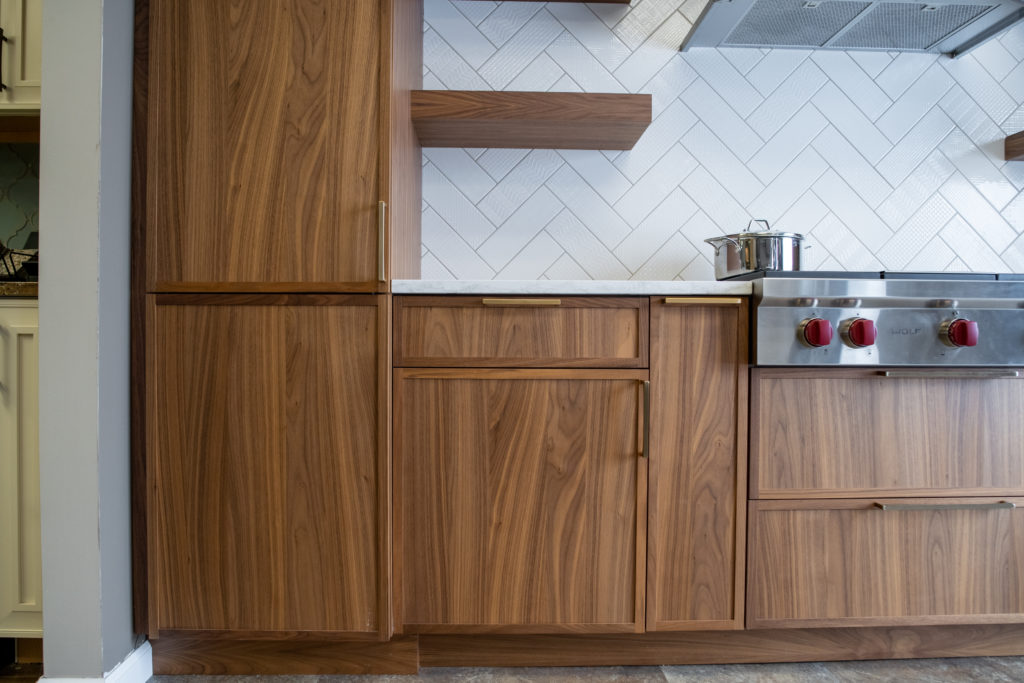
Frameless Cabinets
Could I Mix Framed and Frameless Cabinets?
If you’re adding new cabinets into a room, and you already have some framed cabinetry in that room, could you add new frameless pieces? Our suggestion is no.
Appealing visual design conveys a sense of cohesion. All of the pieces of a room should match together to create a uniform look and feel. Mixing both framed and frameless cabinets in a room would likely break that coherence and pieces would feel “out of place.”
See More Examples of Cabinets in LJ’s Showroom!
Want to see more examples of framed versus frameless cabinets? Visit our showroom in Mt. Pleasant, MI! Meet with one of our expert designers, and discuss what you’d love to accomplish with your renovation. We’ll guide you into optimal choices for the remodeled space’s function and your desired design aesthetic. Don’t have time to visit today? See more examples on our website!









